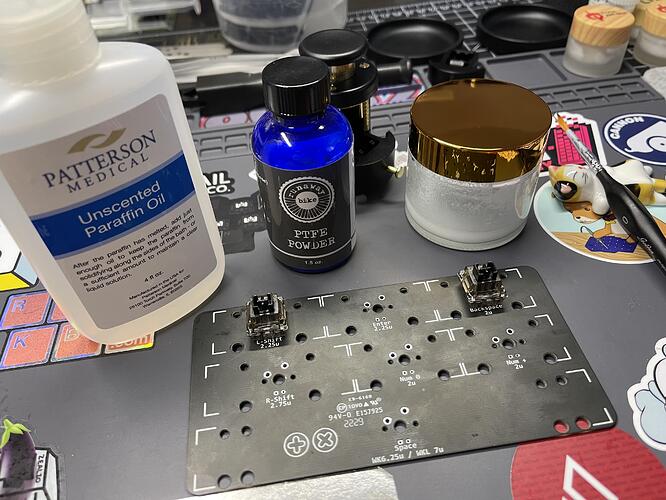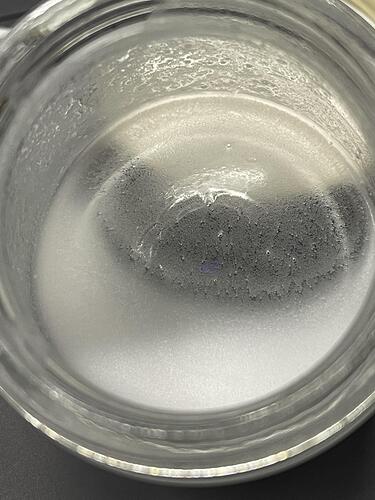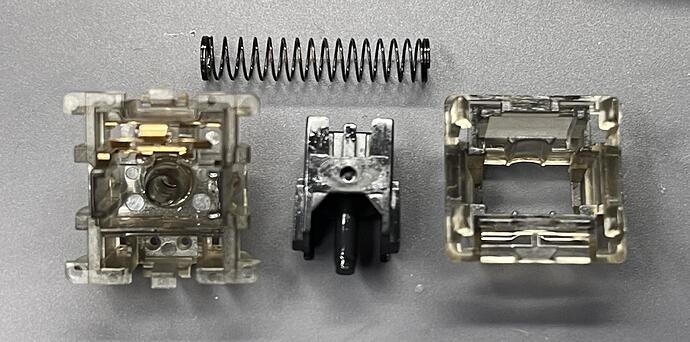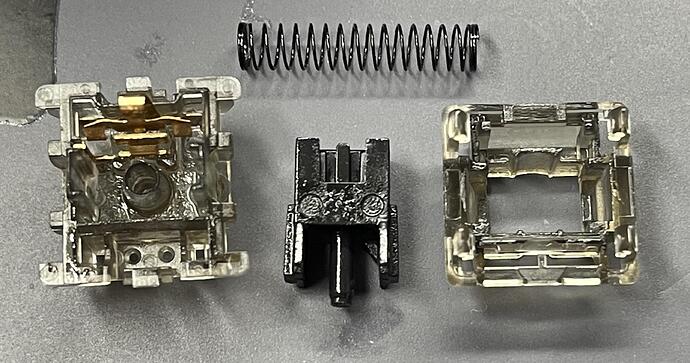I am playing around with an alternative lubing technique that, from what I can tell seems to have great results and is fairly easy.
I picked up some pure PTFE powder as well as some unscented paraffin oil.
I mixed about a 1/2 teaspoon of the powder in with enough oil to create a milky suspension.
Even is the paraffin oil evaporates, it will still leave behind the PTFE powder and is a possibility another option to something like RO-59’s cure time. This is a great option for combating stick-slip on switches that you may have or Frankenswitches that employ the same materials.
STOCK
PTFE SOLUTION
Initially application was smooth with a little scratch, until the PTFE found a home, but then smoothed right out. I will allow it to evaporate for about a week and revisit it, but I am thinking the results will be just as nice if not better.
There are multiple options for both ingredients, but I went with these:
Anyone with any input or experience with this setup, please let me know if I am pursuing futility. ![]()
![]()



